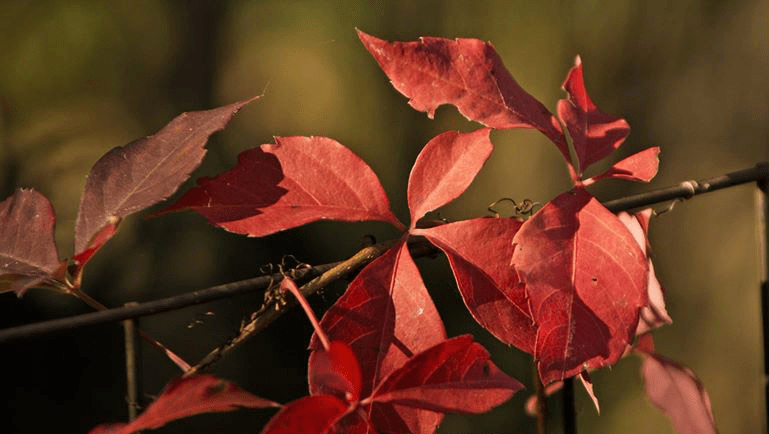Virginia Creeper: vibrant color to brighten a fall day
Published 7:33 am Thursday, January 10, 2019

- CYNTHIA WOOD Virginia Creeper: Parthenocissus quinquefolia
Visit that massive stone heap, Blenheim Palace, in October and you’ll find the walls near the main entrance and clock tower glowing red in the weak afternoon sun. They’re covered with Virginia creeper (Parthenocissus quinquefolia). Visit Hever Castle, the home of Anne Boleyn, and you’ll find the same vine covering part of the façade. Closer to home, wander about Back Bay National Wildlife Refuge in November and you’ll find some bright red Virginia creeper leaves still lingering on the vines.
Virginia creeper was introduced to England in 1629 and quickly became popular as a vine that could be used to cover walls and add color to gardens in late fall. Unfortunately, this vine doesn’t have any naturally known predators in England. It escaped cultivation and is now running rampant in the lowlands in southern England. It’s frequently found along roads and railroads, and just about everywhere else. Recent studies show that Virginia Creeper has also become problematic in Belgium, Spain, France and Switzerland.
Even here, where it’s a native, Virginia creeper has a very mixed reputation. It’s beautiful, easy to grow and of value to wildlife, but it’s hard to control. Plant it in your garden, forget about it for a just half a season, and you may discover that it’s climbed a tree or overrun every shrub within sight. I definitely have a love/hate relationship with Virginia creeper in my garden. It grows along an old stone wall where it adds texture and color; even more important, it’s probably holding the wall together. My Virginia creeper is beautiful in early spring when the new foliage is a deep purple green. By mid-summer, however, the leaflets have turned a dull green, and I’m pulling 10-foot-long runners out of the boxwood and even the tops of the crape myrtles. By fall, when the leaves turn crimson, I’m back to loving this vine again.
Trending
I try to remember that songbirds love the blackish blue berries that appear in fall and that both birds and small animals use the vines for shelter, but it’s not easy. And then there are the people who look at my Virginia creeper and shriek that it’s poison ivy and is going to infect every school child who sits on my wall. The two plants are actually quite easy to tell apart. Virginia creeper has five leaflets that are toothed. Poison ivy has three leaflets. Both plants can put on a spectacular show of color in fall.
Yes, Virginia creeper is a native plant that has considerable value for wildlife, but it’s also a very vigorous grower that can become problematic unless carefully managed. Take care.
CYNTHIA WOOD can be reached at cynthia.crewe23930@gmail.com.





